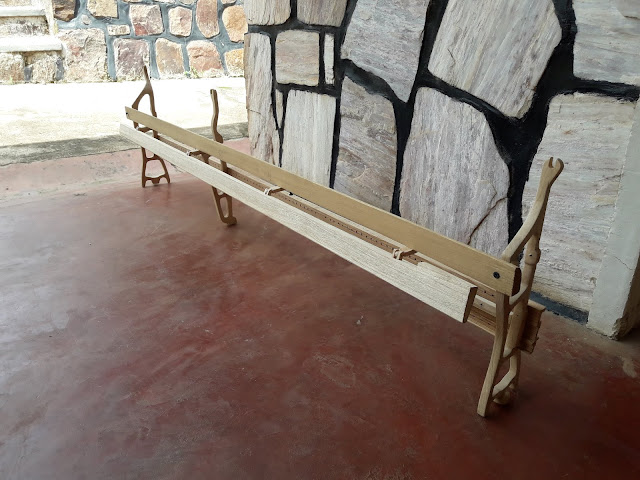Hi everyone. Shamefully late on an update. Had things all been going well, this would probably have read 'We've finished stringing'. Unfortunately, we hit a few snags.
Couple of the bridge pins were slightly misaligned, which led to the problem above, where the S bend didn't hold and kept popping out. Marion got intimate with a soldering iron, but the electricity didn't seem strong enough to keep it heated, so she resorted to superglue and strips of copper wire. Seems to be holding.
Then disaster struck.
Almost finished the midsection when she noticed the number of remaining hitch pins didn't tally. Counted them over and over. Dés even counted the originals again to be sure. There was nothing wrong with the frame, she'd just missed one of the pins further back.
The strings come down, round a hitch pin and back up. Sometimes, the pressure of tightening the tuning pins causes the string to pop off the pin. This must have happened, and she pushed it back onto the wrong pin - one in front - throwing everything else off count.
This meant going back and moving all the strings back a pin, but also required a lot of restringing because the pins before require longer lengths of wire than the pins after.
You might remember there was a dodgy pin that we had to send back to Chillington to re-weld. Well, during restringing, that gave up the ghost and snapped off.
We thought we were facing another trip to Chillington, which gets expensive as we don't have a van, so we need to hire one - and five men to lift the piano.
Thankfully, it didn't come to that. We owe a huge debt of gratitude to Chillington's engineer, Julias. He hopped on a moto and came to take a look. What we couldn't see was that the bit still embedded in the frame was loose. With a pair of tweezers, he pulled it out and it was as long as the original piece. He set it with our hero, Superglue, and packed it with sand.
We admit to feeling sceptical, but we've just strung it up and it's holding really well.
So, quite a few scuffs and bruises so far, but that's the point - it's a prototype. We're looking to find out all the things we need to do better next time.
So far, nothing so drastic it won't play.
It's just taking a little longer than we were hoping. It all went wrong round about the time Marion was heard to say, "Huh, stringing a piano isn't as hard as I thought it would be..."



























